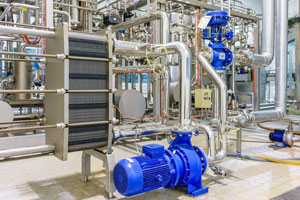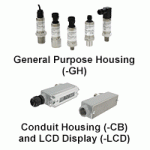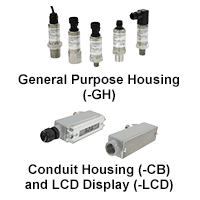What are the differences between pressure transducers and pressure transmitters?
 Many readers have likely heard the terms transducer and transmitter used interchangeably without much confusion. When searching the internet for either term, search engines provide nearly identical results. Are there any differences? The short answer is “yes”.
Many readers have likely heard the terms transducer and transmitter used interchangeably without much confusion. When searching the internet for either term, search engines provide nearly identical results. Are there any differences? The short answer is “yes”.
According to Dictionary.com, a transducer is “a device that receives a signal in the form of one type of energy and converts it to a signal in another form” and a transmitter is “the part of a telephonic or telegraphic apparatus that converts sound waves or mechanical movements into corresponding electric waves or impulses.”
As you can see, the definitions are very similar. Both devices convert a form of energy or movement into an electrical signal. How do these definitions apply to pressure sensors?
In terms of pressure measurement, the term “pressure transmitter” is more commonly used to refer to a unit with a milliamp (such as 4-20 mA) output, while the term “pressure transducer” is more commonly used to refer to a unit with a millivolt (mV) or voltage (V) output (both linear voltage and ratiometric).
Pressure transmitters with a milliamp output are less susceptible to both electrical noise and signal degradation on longer lengths of wire. Pressure transducers with voltage outputs generally require less power to operate.

Dwyer offers several pressure transmitters for use with compressors, pumping systems, irrigation systems, industrial process monitoring, and hydraulic applications. The Series 626 & 628 Pressure Transmitters feature a piezo-resistive sensor contained in a compact, rugged, NEMA 4X (IP66) stainless steel general purpose housing or cast aluminum conduit housing.
In conclusion, a pressure transmitter:
- Receives a signal and converts it to another form
- Commonly refers to a unit with a milliamp output
- Is less susceptible to electrical noise and signal degradation on longer lengths of wire if a milliamp output is used
While a pressure transducer:
- Converts mechanical movements into corresponding electric waves/impulses
- Commonly refers to a unit with a millivolt (mV) or voltage (V) output
- Generally require less power to operate when using a voltage output
Knowing how each of these devices works, in addition to the product specifications and application requirements, will help you narrow down your choices and select a product well suited for your application.
Please refer to the specifications to determine what product or model is best for your application. If you have any questions, the Dwyer Applications Engineers are available to assist by phone at (219) 879-8000, or by email at tech@dwyermail.com.

